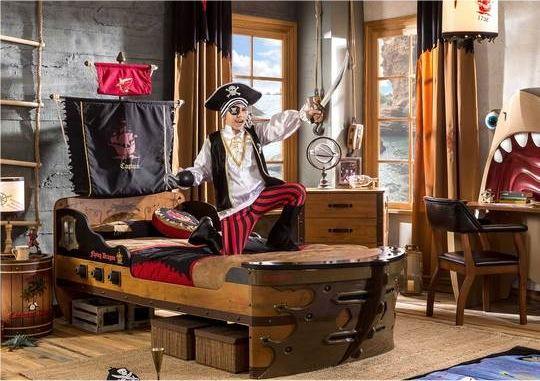What’s your favorite color? It seemed, when you were young, that it was an important question—a question that told a lot about you, your likes, dislikes, and who you spend time with. While learning a person’s favorite color doesn’t really hold the same importance in adulthood, there is a lot of theory, and even evidence, that suggest that the colors we surround ourselves with are not mere decoration, but also can have a significant effect. At Çilek, when we design our fun furniture for kids, color is among the most crucial decisions. Let’s look at what color can tell us.
Green
You may have heard it said that liking green is linked to intelligence; while that’s hard to prove, it has been shown that a green environment can increase concentration. Green is a low-frequency color, and as such has been shown to reduce stress, and even increase concentration; think of the feeling you get when you’re in a Japanese garden, or staring out over an expansive evergreen forest.
Orange
It’s all about mood with orange. Just looking at a bright orange object can suggest the zesty scent of citrus, and the energy boost that comes with it. Still, there is a time and a place for all this zest. As a result, a bright orange bedroom may not be the most conducive for bed time. It also may work better as an accent color (it’s easier on the eyes, too.)
Blue
If anyone out there likes listening to Miles Davis, they know that feeling ‘kind of blue’ isn’t just about feeling sad. On the contrary, a room with prominent blues can offer a focused, introspective environment—a place where you’re calmer, and therefore get more done. It has been suggested that those whose work demands high concentration for prolonged periods of time can do better in a blue environment. So turn on some jazz, crack a book with your toddler, and don’t let the blues scare you away.
Mix it up
Naturally, an ideal room, whether for play or sleep, won’t be monochrome. You’ll mix and match a color palette that both stimulates, calms, ad perhaps just looks good. Still, childhood can and should be the time for experimentation, creativity, and color. It should be noted that color choice shouldn’t turn the child’s room into a parent’s laboratory. At the end of the day, a room should reflect the desires of the child, as much as possible. Having said that, Fun furniture for kids can be a good mix: the colors that inspire, enrich, and help a child feel like they have a special place to belong. That’s what everyone wants their room to be.


Share:
Tough Bed Time? Kill the Lights!
Why Are Kids Fascinated with Pirates?